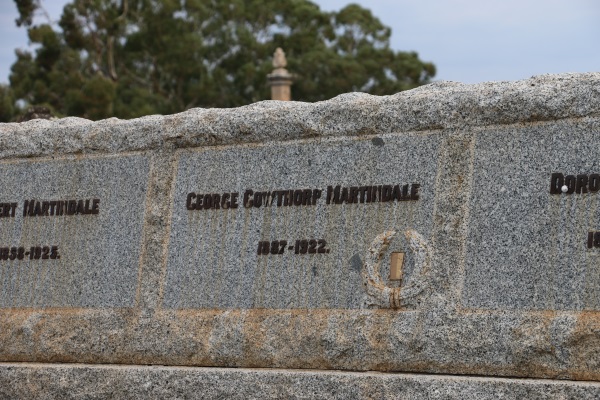Local war historian Charles Rees has written an installment about the centenary of the Battles of Bullecourt and Lagnicourt of April and May 1917, the latest in a series of war history pieces.
"Bullecourt court, more than any other battle shook the confidence of Australian soldiers in the capacity of the British command; the errors, especially on April 10th and 11th, were obvious to almost everyone". - Charles Bean, Official Historian.
The Australian 4th Division, 1 ANZAC Corps as part of the 5th British Army, General Commanding Sir Hubert Gough, were involved in an attack on the Hindenburg Line, near the village of Bullecourt, due to take place on 10th April,1917. The German defences were deep trenches, dugouts, heavy concrete bunkers, strategic machine nests and wide belts of barbed-wire, with three divisions of elite Prussian Guard Corps.
Tanks, 12 of them, were to be used as cover for the infantry in the absence of unavailable artillery. Also to crush the barbed-wire. They were heavy slow moving, cumbersome, which proved to be ineffective; broken down and shot-up.
These machines were supposed to have overcome the limitations of the earlier Mk1 and 2 types introduced to the Somme battle front in 1916.
The tanks were late, the attack on the 10th April was postponed until the 11th. Communication became a problem. The British 62nd Division did not receive the message of the postponement, they stormed the formidable German defence completely without support. Devastating losses was the outcome.
The aggressive spirit of General Gough lead to the April 11th attack being a disaster: poor planning, no artillery, tanks tragedy, being heavily outnumbered, meant no gain. Instead 3,000 Australians killed and wounded, with 1,170 taken prisoner; largest number at one time during the war.
The Australian troops faced heavy artillery barrages, mortar shelling, machine gun fire and even hand-to-hand fighting.
On May 3rd General Gough ordered another attack over the same ground. This time it was our 2nd Division with British support, and artillery; no tanks. They were relieved by our 1st Division, soon after the 5th Division took over. Determined furious fighting for 17 days gained 1 km of enemy ground, but at a huge cost. Accounting for 7,000 killed and wounded; heaviest loss of Australian man-power in one battle of WW1.
Three Victoria Crosses were awarded for gallantry.
Charles Bean described the 2nd battle of Bullecourt, "...in some ways the stoutest achievement of the Australian soldier in France'.
Leading up to the "Bullecourt" assault on the Hindenburg Line, furious fighting took place at Bapaume, Noreuil, Morchies and Lagnicourt.
Lagnicourt was a diversion battle by the Germans to disrupt the Australians and to capture as many guns as possible, aiming to weaken their ability to defend that sector. In a few hours of the morning April 15, approximately 4,000 Australian soldiers fended off about 16,000 Germans. They incurred 1,000 casualties while inflicting 2,300 losses on their opponents.
Three more Victoria Crosses were awarded for gallantry.
When the Australian soldiers pulled out, they were not to return. Flanders and the Somme was to be their future battle grounds.
I have been among the later generations of Australians to visit Bullecourt, 2007 and 2008, where the huge Australian sacrifice was made during those fatal weeks in 1917.
The Australian soldiers are honoured at Bullecourt Memorial Park with a bronze "Digger" sculpture by Melbourne artist Peter Corlett, unveiled in 1993. ANZAC Day services are held there each year.
The land was donated by a local farmer, who was village Mairee (Mayor).
Queant Road Cemetery, near Buissy, has almost 1,000 known Australian graves, 700 have unknown soldier identity.
Sergeant Jack White was buried there late in 1995,77 years later. He was killed on May 3rd,1917. His remains were uncovered by a local farmer.
Dimboola man Sergeant George Gowthorpe Martindale received a severe gunshot wound to the head, losing his right eye, on May 9th,1917. He died at Dimboola in December 1922.

George Martindale is buried in Dimboola Cemetery.
Two Dimboola men were killed at Bullecourt in May 1917. They were Lance Corporal Hermann Schulze and Private Leslie Harold John White. They both have no known grave.
All three are honoured at Dimboola's Soldiers Memorial, Dimboola Memorial Secondary College, Honour Roll and Avenue of Honour.
References: Peter Burness and Craig Tibbitts, Aust. War Memorial, Canberra; Charles Rees' visit 2007/08.
Image at top: Australians in the second line of the trenches before Riencourt (near Bullecourt), in May 1917, cleaning their rifles in readiness for an attack. Source: Australian War Memorial, E00454.
|






